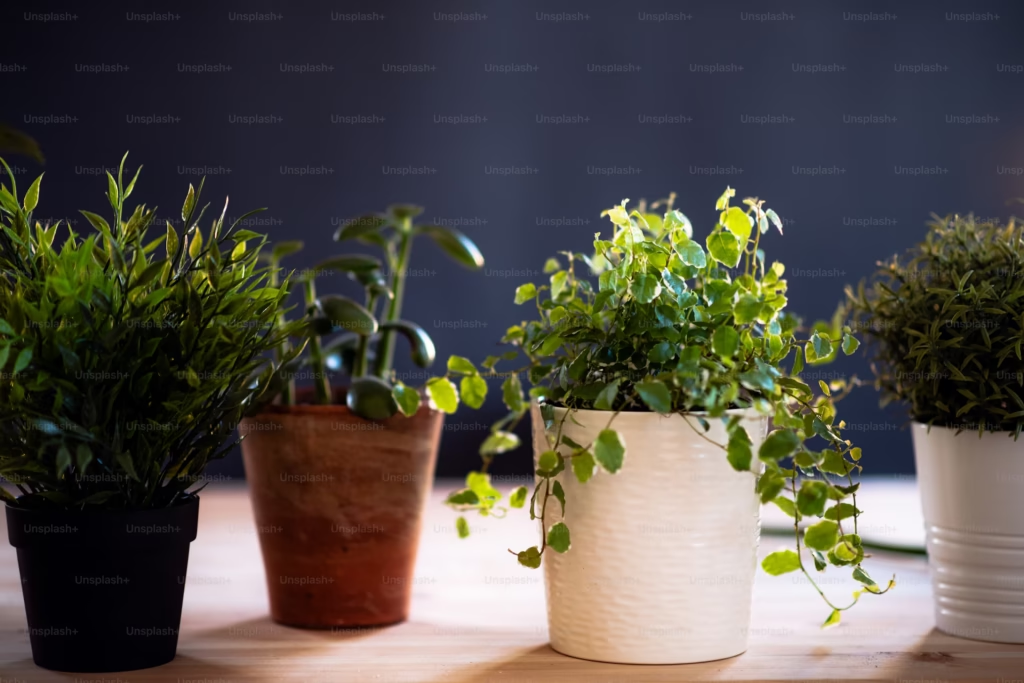
How to Care for Peace Lilies: A Complete Guide
Peace lilies (Spathiphyllum) are popular houseplants known for their elegant white blooms and lush green foliage. They are easy to care for, making them perfect for both beginner and experienced plant enthusiasts. Peace lilies not only add beauty to your indoor spaces, but they also help purify the air. Whether you’re a seasoned plant parent or new to the world of houseplants, this comprehensive guide will teach you how to care for peace lilies and ensure they thrive.
1. Choosing the Right Location
Peace lilies thrive in moderate to low light conditions, making them perfect for indoor spaces with indirect sunlight. However, while they can tolerate low light, they will bloom best with bright, indirect light. Avoid placing them in direct sunlight, as this can scorch their leaves and affect their health.
Tips:
- Best Location: Place them near windows with sheer curtains or in rooms with plenty of indirect light.
- Avoid Direct Sun: Direct sunlight can cause leaf burn, so keep your peace lily away from windows that get harsh midday sun.
2. Ideal Temperature and Humidity
Peace lilies prefer warm, humid environments. The ideal temperature range for peace lilies is between 65°F to 80°F (18°C to 27°C). They can tolerate temperatures outside this range, but extreme heat or cold can harm them.
Since peace lilies are native to tropical regions, they thrive in higher humidity levels. Dry air can cause the tips of the leaves to brown, so it’s essential to maintain a moderate level of humidity.
Tips:
- Humidity: If your home is dry, consider using a humidifier or placing your peace lily in a bathroom with good light. Grouping plants together also increases humidity.
- Avoid Drafts: Keep your peace lily away from air conditioners, heaters, and drafts, which can stress the plant.
3. Watering Your Peace Lily
Watering is a crucial aspect of peace lily care. These plants prefer to be kept moist but not soggy. Overwatering can lead to root rot, while underwatering can cause the leaves to droop and turn yellow.
How to Water:
- Check Soil Moisture: Water when the top 1-2 inches of soil feel dry. Stick your finger into the soil to check moisture levels.
- Use Room Temperature Water: Always water with room temperature water to avoid shocking the plant.
- Drainage: Ensure the pot has good drainage to allow excess water to escape. If your peace lily’s pot doesn’t have drainage holes, it’s best to repot it into one that does.
Tip: Peace lilies are forgiving when it comes to watering, and they will often droop when they need water. Don’t be alarmed if they droop a bit; they will perk back up once watered.
4. Fertilizing Peace Lilies
Fertilizing your peace lily helps keep it healthy and encourages blooms. However, peace lilies are not heavy feeders, and over-fertilizing can harm the plant. Use a balanced, water-soluble fertilizer every 6-8 weeks during the growing season (spring and summer).
How to Fertilize:
- Use Half Strength Fertilizer: Always dilute the fertilizer to half strength to avoid nutrient burn.
- Avoid Winter Fertilizing: Peace lilies typically don’t need fertilizing during their dormant period in fall and winter.
Tip: Yellow leaves can indicate over-fertilization. If you notice this, reduce the amount or frequency of fertilizing.
5. Pruning and Cleaning Your Peace Lily
Peace lilies don’t require much pruning, but removing dead or yellowing leaves helps improve their appearance and overall health. If you notice old blooms turning brown, it’s a good idea to remove them to encourage new growth.
How to Prune:
- Remove Dead Leaves: Use clean scissors or pruning shears to snip off any yellow or brown leaves.
- Cut Spent Blooms: Once the white blooms fade, cut the flower stalk at the base of the plant to keep the plant looking tidy.
Cleaning the Leaves:
To keep your peace lily looking its best, occasionally wipe down the leaves with a damp cloth to remove dust. This will help the plant breathe and ensure better light absorption.
6. Repotting Your Peace Lily
As peace lilies grow, they may outgrow their pots. Repotting is necessary when the roots become crowded, and the plant starts to look unhealthy. Repot your peace lily every 1-2 years, typically during the spring or early summer.
How to Repot:
- Choose a Larger Pot: Select a pot that’s 1-2 inches larger in diameter than the current one.
- Use Well-Draining Soil: Use a well-draining potting mix, such as one made for houseplants or indoor tropicals.
- Gently Handle the Roots: When repotting, gently remove the plant from the old pot, untangle the roots, and place the plant in the new pot.
Tip: Be cautious not to damage the roots while repotting. Peace lilies are resilient, but stress can delay recovery.
7. Common Pests and Problems
Peace lilies are generally resistant to pests, but they can occasionally be affected by common houseplant pests such as spider mites, aphids, or scale. Keep an eye out for discolored or damaged leaves, as this could be a sign of pests.
How to Prevent and Treat Pests:
- Inspect Regularly: Check the leaves for signs of pests, especially under the leaves and around the base.
- Wash Leaves: If you notice pests, wash the leaves gently with a mild soap and water solution to remove them.
- Neem Oil: For more severe infestations, use neem oil or insecticidal soap to treat the plant.
Other Issues:
- Yellow Leaves: This could indicate overwatering, poor drainage, or too much fertilizer. Check the moisture level and adjust your care accordingly.
- Brown Leaf Tips: Dry air or inconsistent watering can cause brown tips. Increase humidity and water regularly.
8. Peace Lily Flowering
While peace lilies are prized for their beautiful white blooms, they may not flower as often if conditions aren’t ideal. To encourage blooming, ensure your plant gets adequate light (bright, indirect light), is not overwatered, and receives regular fertilization during the growing season.
Tip: Peace lilies bloom most profusely in spring and summer but can occasionally bloom throughout the year in optimal conditions.
Conclusion
Caring for peace lilies is relatively easy, making them an excellent choice for both new and seasoned plant owners. With the right amount of light, water, humidity, and occasional pruning, your peace lily will thrive and brighten up your home with its lush foliage and elegant white blooms. Whether you’re looking for a stunning centerpiece or a natural air purifier, the peace lily is sure to fit perfectly into your indoor garden.



